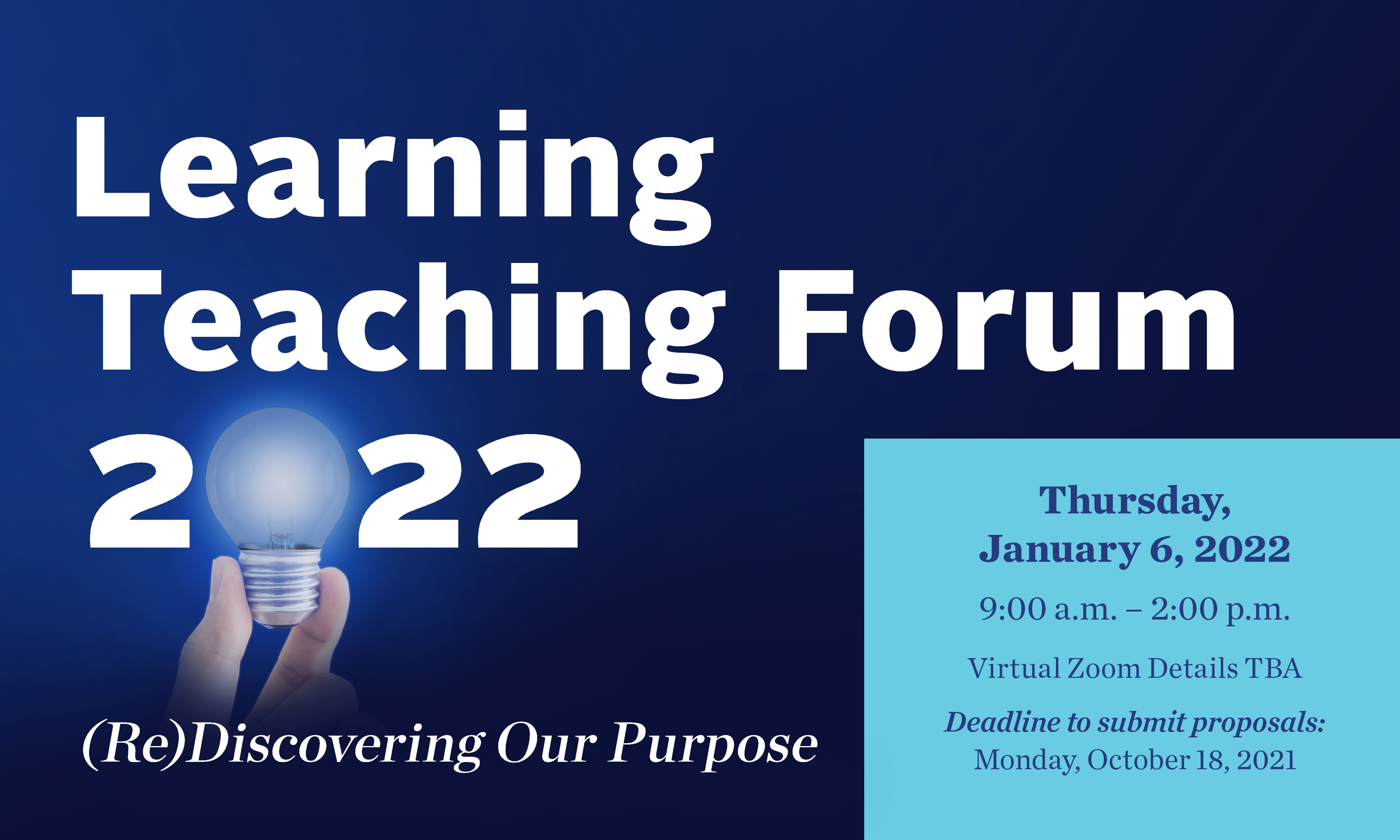(Re)discovering Students’ Interaction Capacities in CMM 100
About the Presenter(s)
Cassandra Secrease is the course director for CMM100 and Senior Lecturer in the Department of Communication. Sam Wallace is Professor Emeritus of Communication.
Start Date
6-1-2022 10:00 AM
Abstract/Description
A basic tenet of CMM 100, Principles of Oral Communication, is that oral communication is an inherently interactive and engaging activity. The course relies on students' ability and willingness to engage with course content and with their peers and instructors during presentations and other in-class activities. The long-term goal is that students continue improving this ability and use it in their college activities and professional careers.
We believe the ability to actively engage is central to all four learning outcomes articulated for CMM 100.
While assessment has been a part of CMM 100 since its inception, and while useful data has been collected, we noted a missing element was students’ predispositions (self-perceptions of cognitive and behavioral characteristics) to perform in the activities of the course.
We identified three critical dimensions contributing to success in oral communication: attentiveness, perceptiveness, and responsiveness. Taken together, these are significant dimensions of a construct that we are calling a “predisposition to active engagement.”
In Spring 2020, we received a CAP Course Improvement and Innovation Grant to assess these essential characteristics of engagement. We created and distributed a questionnaire to students in all sections of CMM 100 in Spring 2020 and Fall 2021.
This presentation will share our findings and describe possible redesigns to current assignments and our overall teaching/learning strategies. Additionally, we would invite those attending to share their successes and challenges as assessment becomes more sophisticated and effective at UD.
Goals for Attendees
Attendees will learn about different assessment techniques and the kinds of engagement and interaction they can expect from their students who have completed CMM 100.
(Re)discovering Students’ Interaction Capacities in CMM 100
A basic tenet of CMM 100, Principles of Oral Communication, is that oral communication is an inherently interactive and engaging activity. The course relies on students' ability and willingness to engage with course content and with their peers and instructors during presentations and other in-class activities. The long-term goal is that students continue improving this ability and use it in their college activities and professional careers.
We believe the ability to actively engage is central to all four learning outcomes articulated for CMM 100.
While assessment has been a part of CMM 100 since its inception, and while useful data has been collected, we noted a missing element was students’ predispositions (self-perceptions of cognitive and behavioral characteristics) to perform in the activities of the course.
We identified three critical dimensions contributing to success in oral communication: attentiveness, perceptiveness, and responsiveness. Taken together, these are significant dimensions of a construct that we are calling a “predisposition to active engagement.”
In Spring 2020, we received a CAP Course Improvement and Innovation Grant to assess these essential characteristics of engagement. We created and distributed a questionnaire to students in all sections of CMM 100 in Spring 2020 and Fall 2021.
This presentation will share our findings and describe possible redesigns to current assignments and our overall teaching/learning strategies. Additionally, we would invite those attending to share their successes and challenges as assessment becomes more sophisticated and effective at UD.




Comments
This would be our required public presentation of our findings for our CAP Course Improvement and Innovation Grant and we welcome the opportunity to share the assessment process in CMM 100 with others.